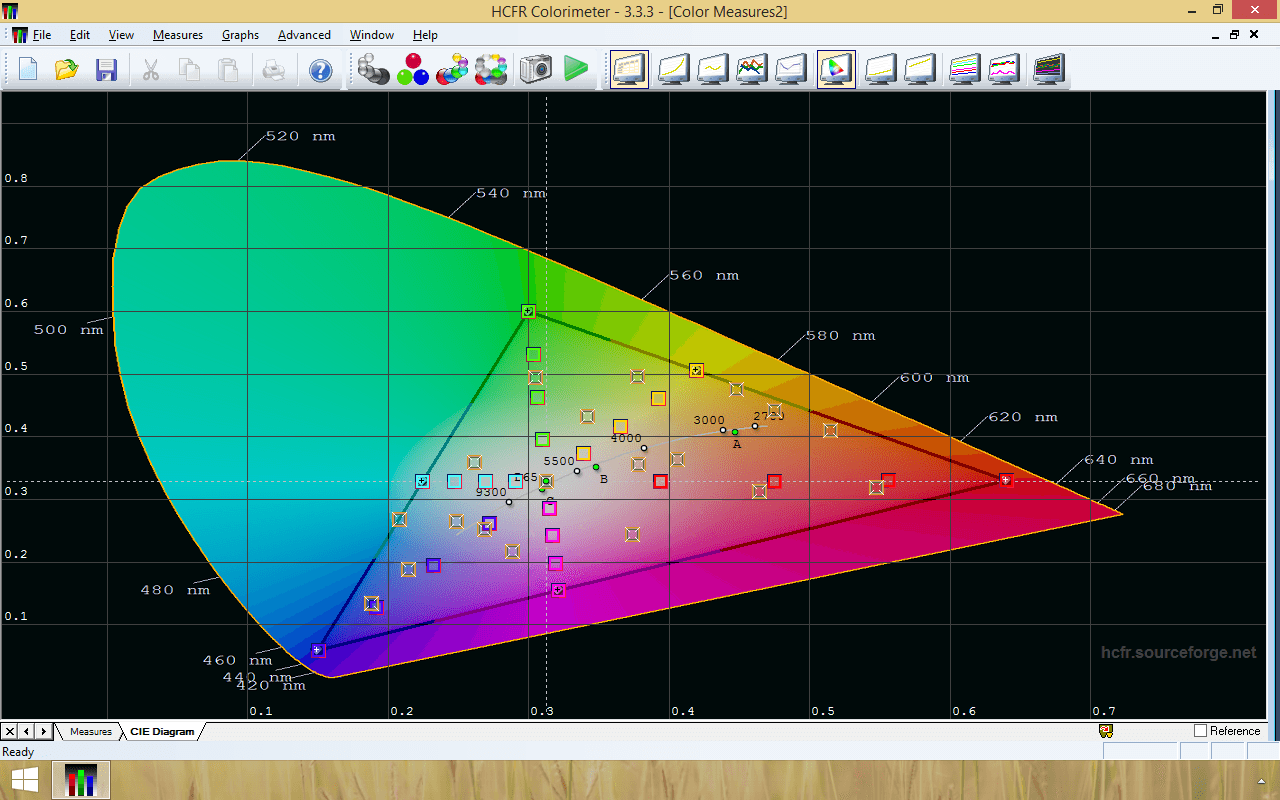

- #Colormunki display greyscale pro#
- #Colormunki display greyscale software#
- #Colormunki display greyscale tv#
- #Colormunki display greyscale free#
It looks a bit better, but the temperature is still too low, and the TN's Gamma is still too high (looks too pale). I tried calibrating PG278Q as 6500k, then reading off the white level after calibration, then have displaycal calibrate it to the same white level, no dice. I plan to do more investigation into this though, as it is really annoying me that both monitors do not calibrate to the same white level even though they were SET at the same white level, and really sticks out like a sore thumb because the IPS monitor looks a little on the yellow side, the tint I hate the most.
#Colormunki display greyscale software#
Using the same software (Displaycal) and same sensor (tried with bith ColorMunki Display and Spyder4Pro), and the exact same colour temperature settings, my PG278Q (TN) always looks higher temp than my B元201PT (IPS) for some unexplainable reason. 3DLUTs is where its at then.įrom my limited experience, the type of panel seem to have an effect as well. But for OCD people, if absolute color accuracy is needed everywhere from movies to games, ignore ICC profiles. Which for games are the most important things, much more important than fixing that particular red color because it is bit over or undersaturated or slightly wrong hue. For everything else the only thing ICC profile can do is fix gamma, color temperature and greyscale. It can correct colors only in color managed applications. Contrast ratio can be reduced too if white point is way off from where it needs to be and ICC profile tries to fix it on software end.īut as far as correcting colors go, even there ICC profile is quite limited.

If ICC profile needs to do drastic changes to get correct calibration the result can have a lot of banding and other nasties.
#Colormunki display greyscale tv#
Its for finetuning after everything is set as accurately as possible on TV end. No, ICC profile is not all in one solution. If the game overrides the ICC profile the result is often anything but accurate to the artists vision, depending on how accurate the monitor is after basic adjustments. All these devices are far better than anything from Spyder. The Pantone ColorMunki (also from X-rite) is a spectrophotometer and more than your needs or purposes at this point in time. But the ColorMunki Display (also from X-rite) is identical to it, only slower in calibration time.
#Colormunki display greyscale pro#
The iDisplay Pro is one of the best (for the money) imo. For measuring the results of the calibration, HCFR is excellent in drawing up charts with all the critical data you may need.Īll this stuff may be daunting when you first get into it but the basics can be easy to learn.ĭepends on how much it matters to you. Displa圜al (which I use with ColorMunki Display) is excellent and is the front end for ArgyllCMS which is considered to be one of the best calibration softwares around. WHile X-rite devices are top notch, their software imo does not measure up to same standard.
#Colormunki display greyscale free#
But many who use the X-rite devices tend to not use their software as there is a better alternative which is free (Displa圜al). The iDisplay Pro, aside from being faster, also has a more advanced software suite. All these devices are far better than anything from Spyder.įor some, the extra $100 for the iDisplay Pro over the ColorMunki Display might not be worth it. It's also usually more precise and has less banding problems (I believe GPUs is 8bit only).Ĭlick to expand.Depends on how much it matters to you. Monitors supporting hardware calibration modify their own internal LUT and so are not affected by any software messing up with the GPU. Supposedly widowed/borderless avoids this and there are some injectors that fix it, but I haven't got experience with either. The problem with games is they reset the GPUs LUT so you lose your calibration. There is additional information in the ICC profile for color conversion in supporting apps for even better results but I never quite understood how that part works.Īfter profiling and loading the LUT you get a color accurate image on your monitor. The most important part of it is the LUT that gets loaded into your GPU and does the majority of work to get accurate colors and gama. Click to expand.My understanding of this is limited, but here is how I believe it works:įirst you use your monitor's controls to get the image as good as you can (most often limited to black level, peak brightness and white point) and then let the profiling software make an ICC profile.


 0 kommentar(er)
0 kommentar(er)
